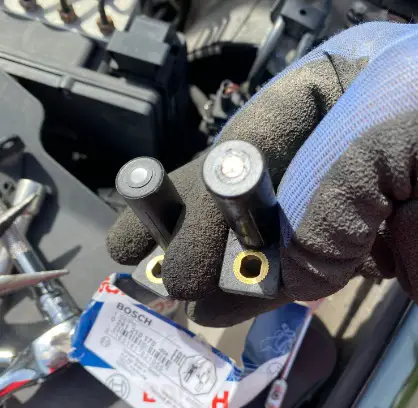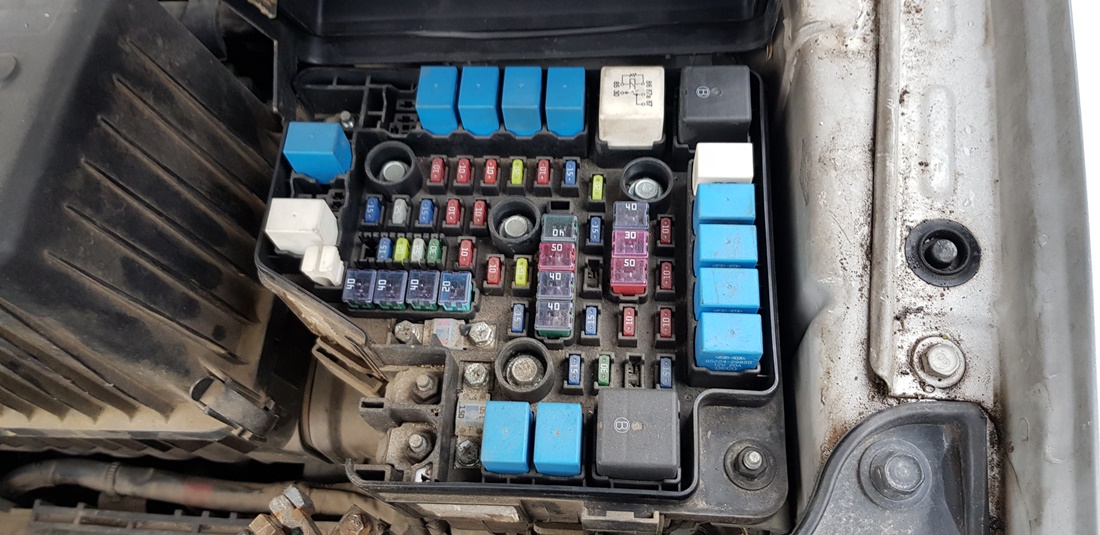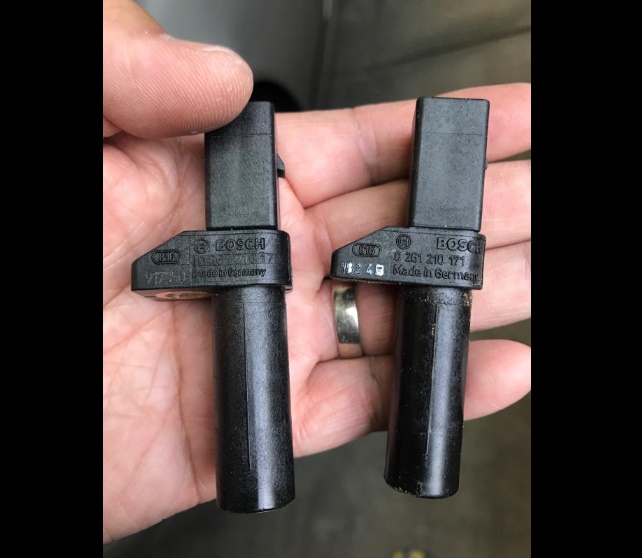A serpentine belt tensioner is something that applies a regulated amount of pressure to the serpentine belt so it can spin the alternator pulley, AC compressor pulley, power steering pump pulley, and others as needed.
Key Takeaway
- It is not safe to drive with a bad belt tensioner because the belt tensioner ensures sufficient tension to power the accessories.
- As the tensioner wears, the belt can slip at the accessories creating noise, excessive heat at the accessory pulleys, and reducing accessory performance. Over time, this can cause permanent damage to the accessories.
- Causes of belt tensioner failure can include worn bearings, excessive belt tension, improper installation, or exposure to extreme temperatures.
Is It Safe To Drive With a Bad Belt Tensioner?

No, it is not safe to drive with a bad belt tensioner because it can cause the drive belt to break and lead to loss of power, loss of power steering, or engine overheating because the water pump will stop working.
If the belt breaks, the alternator will stop charging the battery, which could cause your vehicle to stall and leave you stranded.
Similarly, the power steering pump will stop working, making the vehicle much harder to steer, especially at lower speeds. This can be dangerous, particularly when navigating corners or parking.
Additionally, a bad tensioner can cause unusual and accelerated wear on the belt, and in severe cases, it can even cause the belt to break.
So, any suspicion of a failing tensioner should be addressed immediately to avoid further damage and potential safety risks.
What Is a Belt Tensioner

A belt tensioner is a crucial component of your vehicle’s engine.
It’s essentially a spring-loaded arm that applies pressure to the serpentine belt, ensuring it delivers enough tension to move the various pulleys that drive the engine’s accessories.
The tensioner helps to ensure that the belt works perfectly under all circumstances, keeping it aligned and running smoothly.
Depending on your car model, your belt tensioner may also allow the timing belt to move smoothly through the engine, powering various components.
Causes Of Belt Tensioner Failure

- Belt Slip
- Belt Misalignment
- Failure of the Tension Damper
- Belt Wear/Mating
- Belt Slip on Alternator
The belt tension is the key to the proper functioning of the accessory belt drive system. Transferring torque to run the accessories is the main task of the belt tensioner and anything that interferes with that transfer is a problem.
In the past, much of the focus of torque transfer failure has been on the belt itself, when in fact, belt tension is the culprit.
Here are the 5 most common belt tensioner modes of failure:
1. Belt Slip
If your belt tensioner is worn, it can cause the belt to slip at the accessories and create squealing noise, excessive heat at the accessory pulleys, and reduce the accessory performance. This can result in permanent damage to the belt and the accessories.
2. Belt Misalignment
As the belt runs through the accessory belt drive system, all of the pulleys should be in alignment. A tensioner will cycle a billion times over a hundred thousand miles causing the tensioner pivot bushing to wear. When the pivot bushing wears, the tensioner arm can move out of alignment.
This causes the belt to run uphill on the pulley damaging the belt and causing a lot of noise. The system can only tolerate one degree of misalignment. For each degree over that, thirty degrees of heat is generated for the belt and accessory bearings, leading to accessory failure.
3. Failure of the Tension Damper
The damping mechanism is critical to controlling vibration and power fluctuations. When the damper is worn, it can no longer limit the tension or arm movement which results in the belt slapping against the next accessory. Eventually, the accessory will fail prematurely.
4. Belt Wear/Mating
It makes sense that the belt and pulley must mate properly in order to provide the necessary friction to assure proper accessory function. With modern EPDM belts, it’s hard to visually determine when the belt is worn to the point it will affect belt pulley mating.
A new belt mates tightly with the pulleys creating a belt pulley interface providing necessary traction while leaving a channel to evacuate water and other debris. The belt loses material with normal wear.
With just 5% belt wear, the belt will not mate properly with the pulley losing traction in the ridges. The belt just rides over the pulley wandering and slipping over the top instead of transferring power.
The evacuation channel gets larger as the belt wears allowing water to get between the pulley and the belt pushing up on the belt causing it to hydroplane on the pulley.
5. Belt Slip on Alternator
Each accessory powered by the ABDS has its own job to do and relies on a smooth and steady source of drive power. When the ABD system is working properly, all accessories are running as they should.
The alternator, for example, will be spinning at the design speed creating electricity to power the vehicle and recharge the battery.
As the belt slips, all of the accessories operate at a diminished output. The amount of electricity produced by the alternator, for instance, will fluctuate with a belt slip. This may lead the motorist to conclude that they have a bad battery or alternator when the problem is actually a worn belt or tensioner.
The check engine light may even come on with an unrelated trouble code. The accessories are inefficient and their life will be shortened by the additional stress placed on them.
As you can see, the effect of a worn tensioner can be very damaging. It’s up to you to decide is it safe to drive with a bad belt tensioner. Identifying tensioner issues require more than a simple inspection of the belt. Also, remember, the service life of the tensioner is the same as that of the belt itself. They should be replaced together.
Signs Of Bad Belt Tensioner

- The serpentine belt slipped off during the startup
- Failed hydraulic tensioner
- Growling noise
- The serpentine belt is worn rapidly or unevenly
- Loss of power and battery light illuminated
A bad belt or failing belt tensioner can give you signs that even an untrained mechanic can identify. There are many signs of a bad belt tensioner, but here are the 5 most common signs:
1. Serpentine belt slipping off during startup
If the serpentine belt slips off after the engine is started or running that means the belt tensioner is no longer applying tension to keep the serpentine belt in place.
With the engine off, check the belt tensioner and pulley. The pulley should spin freely without making any noise. If there is noise, then the tensioner is bad.
In addition, use an appropriate belt tensioner tool and loosen the tensioner. If the tensioner feels like it is easy to move, then the tensioner is probably worn.
2. Failed hydraulic tensioner
A proper working hydraulic tensioner can apply a good amount of tension. When there is a leak, the tensioner can no longer apply the needed tension to the belt. Check the tensioner for oil leakage. If there is a leak, you should replace the tensioner.
3. Growling noise
When the tensioner starts to go bad, it will start to make a loud growling noise. This means that the bearing inside the tensioner is failing and eventually it will fall apart. Sometimes when the tensioner falls apart, the pulley itself can also fall out of place. So, if you hear a growling noise, make sure to replace the tensioner.
4. Serpentine belt wearing rapidly or unevenly
There needs to be proper belt tension for the serpentine belt to fit properly on each spinning pulley groove such as the alternator, AC compressor, power steering pump, and others.
When the tension is weak, the belt can jump out of place and sit unevenly on the grooves. This will cause the serpentine belt to rapidly wear out and eventually fall out of place.
5. Loss of power and battery light illuminated
When the tensioner fails, the serpentine belt will slip off and break. When this happens, the alternator, power steering pump, and AC compressor will stop working. Since there is no belt turning the pulley, the battery light will turn on, and steering will be difficult. The AC compressor will also stop working as well.
How To Inspect A Bad Belt Tensioner
- Listen for unusual noises: A bad or failing belt tensioner will often make a squeaking or rattling noise, especially during cold starts or under acceleration. This is usually the first sign of a problem.
- Check for visible wear or damage: Inspect the tensioner pulley for any visible signs of wear or damage. This includes cracks, chips, or any other signs of physical deterioration.
- Look for irregular belt movement: With the engine running, observe the serpentine belt. If the tensioner is bad, the belt may flutter or move irregularly.
- Perform a tension test: Press on the belt with moderate pressure. If the tensioner is in good condition, the belt should rebound instantly. If it doesn’t, the tensioner may be worn out.
- Inspect the tensioner pulley alignment: The pulley should align perfectly with the belt. If it’s tilted or misaligned, the tensioner may be damaged.
- Look for leaks or corrosion: Some tensioners use a hydraulic dampener which can leak fluid if it’s failing. Also, look for any signs of rust or corrosion.
- Perform a spin test: With the belt off, spin the tensioner pulley by hand. If it spins freely without resistance or noise, it’s likely in good condition. However, if it’s hard to turn or makes noise, it might need to be replaced.
Can Bad Belt Tensioner Cause Squeaking

Yes, a bad belt tensioner can indeed cause squeaking. If the bearings in the tensioner partly seize, it can cause the belt to slip over the pulley, leading to a squealing noise.
Additionally, if the tensioner and pulley are not aligned properly with the belt system, the rubber belt may slip and start making unwanted noises.
Another common cause is a worn-out tensioner that results in belt misalignment, causing the squeaking sound.
Moreover, if the pulley grooves are damaged due to wear and tear over time, it can also lead to a chirping noise. Therefore, any unusual noise from the belts or tensioner should be inspected promptly to avoid potential damage.
Can a Bad Belt Tensioner Cause The Belt To Break?
Yes, a bad belt tensioner can indeed cause a belt to break. If the tensioner is not working properly, it may apply too much tension or not enough, both of which can lead to premature belt wear and potential breakage.
The tensioner is designed to maintain the correct amount of tension on the drive belts, allowing them to turn various engine accessories like the alternator, water pump, and air conditioning compressor.
Too much tension can cause excessive strain and wear on the belt, while insufficient tension can cause the belt to slip, resulting in heat build-up and eventual breakage.
Therefore, it is crucial to address any issues with the belt tensioner promptly to prevent further damage, including the risk of a broken belt.
How Much Do Belt Tensioners Last In a Car?
belt tensioners are designed to last anywhere between 40,000 and 100,000 miles. Some manufacturers recommend replacing your tensioners at around the 50,000-mile mark or after four to five years.
However, if you frequently drive in harsh conditions, it might be necessary to replace it sooner.
There aren’t a lot of warning signs that a drive belt tensioner has hit the end of its life, but some common symptoms include a squeaking or rattling noise from the front of the vehicle, power loss, or an overheating engine.
Belt Tensioner Replacement Cost
The cost of replacing a belt tensioner can range between $140 to $400, depending on the parts needed and labor costs.
However, driving with a bad tensioner is not advisable as it can lead to serious engine damage.
FAQs
Q: What is a belt tensioner?
A: A belt tensioner is a component in a vehicle’s engine that helps to maintain proper tension on various belts, such as the serpentine belt or timing belt. It ensures that the belts are tightly held in place and properly aligned.
Q: What does a belt tensioner do?
A: A belt tensioner ensures that the belts in a vehicle’s engine are properly tensioned and aligned. It helps to prevent slippage, excessive vibrations, and premature wear of the belts. It also helps to maintain the efficiency of the engine’s accessories and systems.
Q: How does a bad belt tensioner affect my vehicle?
A: A bad belt tensioner can have several negative effects on a vehicle. It can cause the belts to slip, resulting in decreased performance of the engine’s accessories or systems. It can also lead to vibrations, noise, and even complete failure of the belts. Additionally, a bad belt tensioner can cause damage to other engine components if left unattended.
Q: What are the common signs of a bad belt tensioner?
A: Common signs of a bad belt tensioner include squealing or chirping noise coming from the engine, visible belt damage or wear, vibrations while driving, and intermittent or complete loss of power to engine accessories or systems. If you notice any of these signs, it is recommended to have your belt tensioner checked by a professional mechanic.
Q: Can I drive with a bad belt tensioner?
A: It is not recommended to drive with a bad belt tensioner. A failing belt tensioner can lead to belt slippage, which can in turn cause damage to other engine components. It can also result in a loss of power to vital systems, such as the alternator or power steering. It is best to have the belt tensioner repaired or replaced as soon as possible.
Q: How much does it cost to replace a belt tensioner?
A: The cost of replacing a belt tensioner can vary depending on the make and model of your vehicle, as well as the labor rates in your area. On average, the cost of a belt tensioner replacement can range from $150 to $400. It is recommended to get a quote from a reputable mechanic to get an accurate estimate for your specific vehicle.
Q: Can I replace the belt tensioner myself?
A: Replacing a belt tensioner should be done by a professional mechanic who has the necessary knowledge and tools. It requires proper understanding of the belt tensioning process and the correct alignment of the belts. Attempting to replace the belt tensioner yourself without proper knowledge can lead to further damage or incorrect installation.
Q: How often should I replace the belt tensioner?
A: The lifespan of a belt tensioner can vary depending on the vehicle and driving conditions. It is generally recommended to have the belt tensioner inspected during routine maintenance, such as during a timing belt replacement or oil change. If any signs of wear or damage are found, it is best to have the belt tensioner replaced to prevent potential problems.
Q: Can I drive with a loose belt tensioner?
A: Driving with a loose belt tensioner can cause the belts to slip or become misaligned. This can result in decreased performance of the engine’s accessories or systems, such as the alternator or power steering. It is not recommended to drive with a loose belt tensioner, as it can lead to further damage or complete failure of the belts.
Q: How long does it take to replace a belt tensioner?
A: The time required to replace a belt tensioner can vary depending on the make and model of your vehicle, as well as the experience and efficiency of the mechanic. On average, it can take anywhere from 1 to 3 hours. It is recommended to consult with a professional mechanic to get a more accurate estimate based on your specific vehicle.
In Conclusion
While a vehicle may still run for a certain period with a bad tensioner, it is unsafe and could lead to more significant problems down the line.
Regular maintenance and prompt replacement of a bad tensioner are highly recommended.




